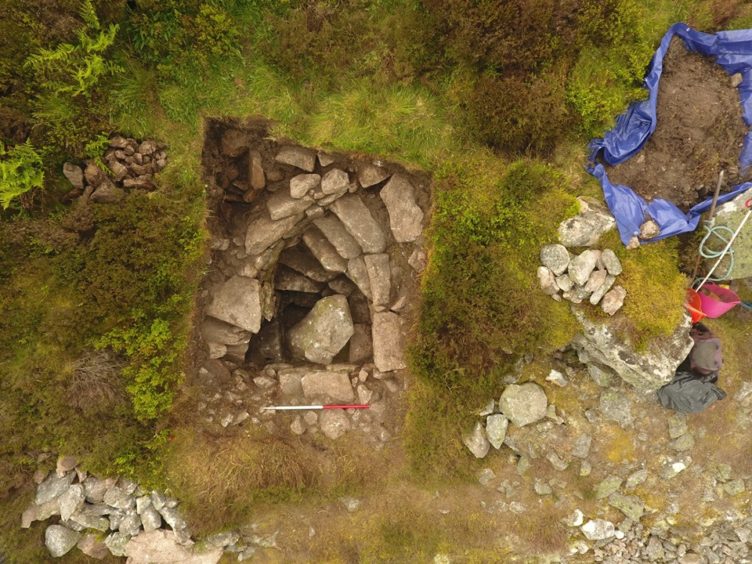Ancient Well With Stone Stairs Unearthed in Scotland
An ancient well at the top of one of Scotland’s most iconic mountain peaks has been unearthed for the first time in hundreds of years.
Archaeologists from Aberdeen University’s Northern Picts projects made the incredible discovery this week at the Mither Tap, one of the summits of Bennachie in Aberdeenshire.

The deep granite well would have served as a water source for the occupants of the impressive fort at the top of the hill, the remains of which can still be seen today.
Although it was previously discovered in the Victorian period, it was recovered and has lain beneath thousands of hillwalker’s feet ever since.
Gordon Noble, the head of archaeology at Aberdeen University, said: “We have been interested in this site for some time because Mither Tap hasn’t really been excavated in any scale since the 19th century.
“We received permission from Historic Environment Scotland – as it’s a scheduled monument – to open up a number of trenches in the area to get dating evidence from all around the fort at the top of Mither Tap.
“We were really expecting to find a pretty bog-standard well, but we uncovered these fantastic steps leading all the way down to the well chamber.
“It’s particularly sophisticated for the period and created a huge amount of excitement both in the team and online.
“It really gives you an idea of the efforts that would have gone into building this fort – the ramparts would have been huge.”
It is not yet known precisely what historic period the well belongs to.
Mr. Noble said a shepherd put a large rock into the well at one point to prevent his livestock from falling in, and it currently blocks access to its lower levels.
He added: “We’re hoping to try and get the stone out to look underneath, but we’ll see what happens.
“I hope we’ll be able to find intact deposits we can sample for dating, or do some pollen sampling to find out about the environment at the time the well was used.
“But even without that, it’s still an incredibly exciting sight to see.”
The team hope to conclude their initial excavations by the end of next week and could return to the Mither Tap in the future subject to funding.
Visitors are invited to go and see the well and the rest of the ongoing archaeology work on Sunday, from 11 am to 1 pm.





